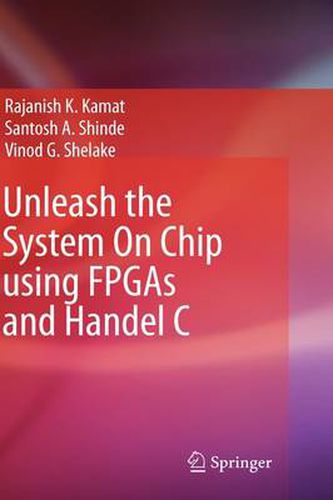Readings Newsletter
Become a Readings Member to make your shopping experience even easier.
Sign in or sign up for free!
You’re not far away from qualifying for FREE standard shipping within Australia
You’ve qualified for FREE standard shipping within Australia
The cart is loading…






This title is printed to order. This book may have been self-published. If so, we cannot guarantee the quality of the content. In the main most books will have gone through the editing process however some may not. We therefore suggest that you be aware of this before ordering this book. If in doubt check either the author or publisher’s details as we are unable to accept any returns unless they are faulty. Please contact us if you have any questions.
With the rapid advances in technology, the conventional academic and research departments of Electronics engineering, Electrical Engineering, Computer Science, Instrumentation Engineering over the globe are forced to come together and update their curriculum with few common interdisciplinary courses in order to come out with the engineers and researchers with muli-dimensional capabilities. The gr- ing perception of the ‘Hardware becoming Soft’ and ‘Software becoming Hard’ with the emergence of the FPGAs has made its impact on both the hardware and software professionals to change their mindset of working in narrow domains. An interdisciplinary field where ‘Hardware meets the Software’ for undertaking se- ingly unfeasible tasks is System on Chip (SoC) which has become the basic pl- form of modern electronic appliances. If it wasn’t for SoCs, we wouldn’t be driving our car with foresight of the traffic congestion before hand using GPS. Without the omnipresence of the SoCs in our every walks of life, the society is wouldn’t have evidenced the rich benefits of the convergence of the technologies such as audio, video, mobile, IPTV just to name a few. The growing expectations of the consumers have placed the field of SoC design at the heart of at variance trends. On one hand there are challenges owing to design complexities with the emergence of the new processors, RTOS, software protocol stacks, buses, while the brutal forces of deep submicron effects such as crosstalk, electromigration, timing closures are challe- ing the design metrics.
$9.00 standard shipping within Australia
FREE standard shipping within Australia for orders over $100.00
Express & International shipping calculated at checkout
This title is printed to order. This book may have been self-published. If so, we cannot guarantee the quality of the content. In the main most books will have gone through the editing process however some may not. We therefore suggest that you be aware of this before ordering this book. If in doubt check either the author or publisher’s details as we are unable to accept any returns unless they are faulty. Please contact us if you have any questions.
With the rapid advances in technology, the conventional academic and research departments of Electronics engineering, Electrical Engineering, Computer Science, Instrumentation Engineering over the globe are forced to come together and update their curriculum with few common interdisciplinary courses in order to come out with the engineers and researchers with muli-dimensional capabilities. The gr- ing perception of the ‘Hardware becoming Soft’ and ‘Software becoming Hard’ with the emergence of the FPGAs has made its impact on both the hardware and software professionals to change their mindset of working in narrow domains. An interdisciplinary field where ‘Hardware meets the Software’ for undertaking se- ingly unfeasible tasks is System on Chip (SoC) which has become the basic pl- form of modern electronic appliances. If it wasn’t for SoCs, we wouldn’t be driving our car with foresight of the traffic congestion before hand using GPS. Without the omnipresence of the SoCs in our every walks of life, the society is wouldn’t have evidenced the rich benefits of the convergence of the technologies such as audio, video, mobile, IPTV just to name a few. The growing expectations of the consumers have placed the field of SoC design at the heart of at variance trends. On one hand there are challenges owing to design complexities with the emergence of the new processors, RTOS, software protocol stacks, buses, while the brutal forces of deep submicron effects such as crosstalk, electromigration, timing closures are challe- ing the design metrics.